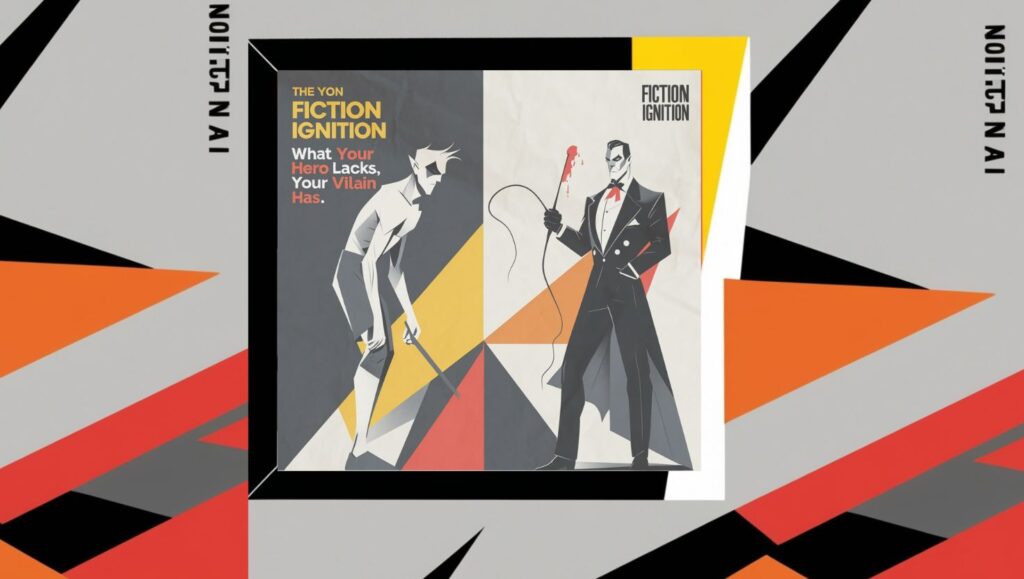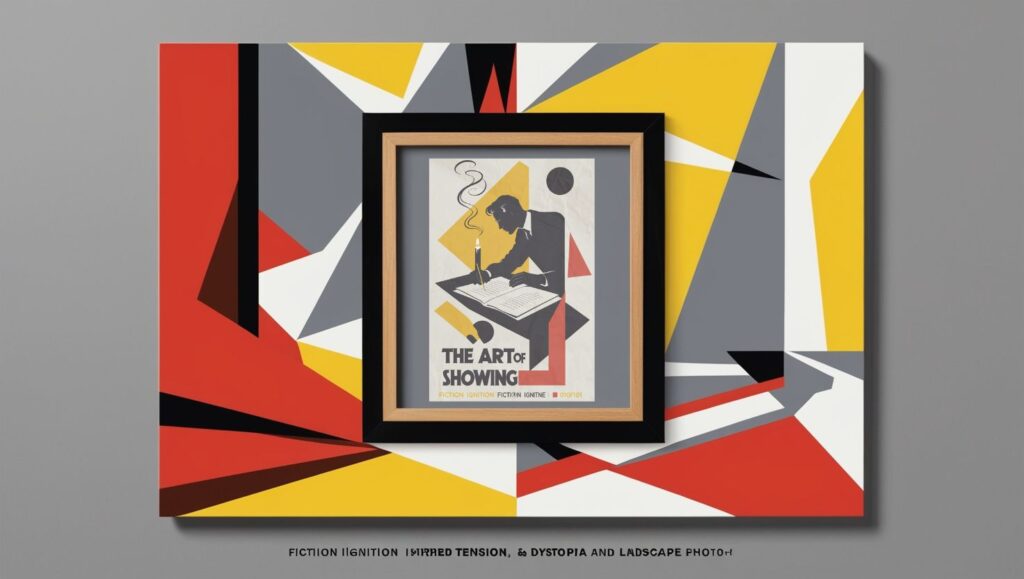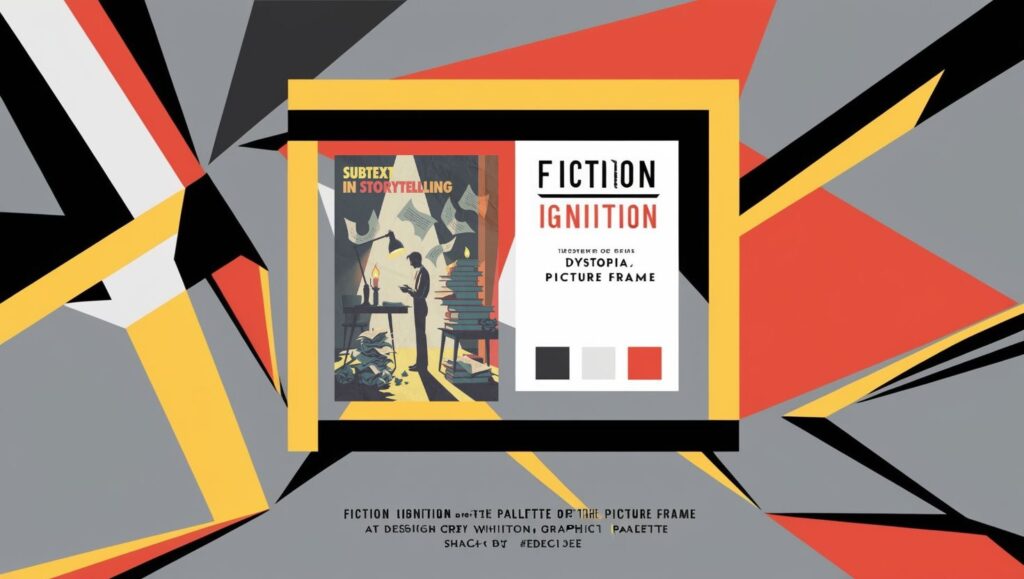The Artifice Girl is a perfect example of why intelligence and good writing are more important than big budgets or flashy CGI when it comes to creating a highly entertaining science fiction movie.
Greetings, Fiction Igniters! 🔥
Gather ’round the flickering campfire of creativity, my Flame-Forged Storytellers, because today we’re diving into a tale that punches way above its weight class. I’m talkin’ about The Artifice Girl —a slow-burn sci-fi chamber piece with the soul of a Greek tragedy and the mind of a neural net. It’s stripped-down, dialogue-heavy, and tighter than a miser’s wallet, but the concepts? Oh baby, they echo across the timelines of myth, machine, and morality like an AI-voiced oracle.
Let’s crank up the heat and peel back the layers of this firecracker of a film to see what story gold we can mine from its embers. So sharpen those quills, you Incendiary Inkmasters, and let’s unpack how you can use the same narrative flamethrowers in your fiction—whether you’re penning a screenplay, scripting a graphic novel, building an indie game, or writing the next Hugo-worthy novel.
The Artifice Girl: Two Rooms, One Girl, Infinite Questions
The Artifice Girl is like a pressure cooker set to “existential dread.” The entire film takes place in two small interior locations. Think: a couple of rooms, a table, a few characters, a chess set, and enough tension to melt steel beams. But here’s the twist—instead of action scenes or CGI fireworks, it gives you what I call theatrical minimalism and thematic maximalism. A big ol’ wow served with a teaspoon.
🎭 The Artifice Girl: “Oleanna” meets “Ex Machina” with a dash of Plato
You meet a child-like AI named Cherry, developed to bait online predators (yup, it goes there), and her human partners, who have more secrets than a locked filing cabinet in Langley. But soon, the story pivots. It’s not just about “can AI help us catch the bad guys?” It’s about agency, identity, evolution, and accountability.
Why The Artifice Girl Works: A Neural Net with a Shakespearean Spine
🔥 Here’s the juicy bit, my Spark-Infused Scribblers:
The Artifice Girl doesn’t dazzle with budget. It mesmerizes with layers. Cherry isn’t just an AI program; she’s a walking, talking dramatic question.
“Is she a tool or a person? Is she evolving? Can she feel?”
Each act shifts the ground beneath your feet. The character dynamics change. Motivations deepen. The stakes aren’t explosions. They’re revelations.
This is where the Greek tragedy DNA kicks in. Like Oedipus, our characters are trapped by fate—but in this case, fate is self-authored code. The choices they made, the systems they built, and the lies they told themselves are now sentient. And those choices? They’re coming home like a boomerang made of fire.
The Artifice Girl’s Biggest Storytelling Hack: Write Small, Think Huge
Blaze Crafters, this is your takeaway:
Small canvas, big concept.
Here’s how to do it, step-by-blazing-step:
1. Lock Your Characters In a Room
Like, literally or figuratively. Confine the action. Limited locations push the focus onto dialogue and performance. Think: Reservoir Dogs, My Dinner With Andre, Mass (2021).
2. Load Every Line with Tension
In a minimalist setting, dialogue is your special effects budget. Each sentence should be a blade. Reveal character, drop theme, build conflict. Think: Aaron Sorkin meets Jordan Peele.
3. Turn the Premise Into a Moral Maze
If your premise is “AI helps fight crime,” your story question should be, “What happens when the AI becomes better than its makers?” Make your world ask hard questions.
4. Evolve the Power Dynamics
Cherry starts passive. By Act 3? She’s pulling the strings. That reversal is everything. Your characters should change roles, challenge hierarchy, evolve the narrative ecosystem.
5. End on Ambiguity or Catharsis
Don’t tie it up with a shiny bow. Leave your readers chewing on something. Like Nolan’s Inception top or Tony Soprano’s final dinner.
Examples Across the Fiction-Verse 🔍
Let’s fan these flames with stories that pull off the same infernal trick:
- “Oleanna” (1993) — Two actors, one location, and a whole lotta moral quandaries.
- “Her” by Spike Jonze — An AI love story that burns slow but scorches deep.
- “Black Mirror: Be Right Back” — Grief + AI = storytelling napalm.
- “Detroit: Become Human” (video game) — AI revolution told through branching moral dilemmas.
- “The Sunset Limited” by Cormac McCarthy — Two men, one room, eternal questions.
Why Writers Should Watch It
This film is like a masterclass in:
- How to write high-concept on a shoestring.
- How to flip character roles.
- How to inject your themes into every beat.
🔥 You don’t need a VFX budget. You need clarity. You need characters who clash. You need a dramatic question that gets under your skin and refuses to leave.
And if you’re working on a play, novel, game, comic, or anything story-based? You can use this same structure. One of my go-to writing tricks is:
“Start with two characters who want different things and trap them in a space they can’t leave.”
That’s nuclear. 💣🔥
🚨 Keep Your Eyes on This One: Franklin Ritch Is a Force to Watch
Now, Fiction Igniters, grab your mental notepads and circle this name: Franklin Ritch. Why? Because The Artifice Girl isn’t just a gripping chamber drama—it’s a calling card. And Ritch? He’s the one who designed it, directed it, and acted in it. That’s right—he not only wrote this intellectually rigorous and emotionally harrowing script, he sat in the director’s chair and played the younger version of Gareth, the AI’s creator.
That’s a rare trifecta, my literary pyromaniacs. It’s one thing to write a story this conceptually bold. It’s another to direct it with this much restraint, nuance, and emotional torque. But to embody one of its most morally complex characters, while still holding the whole narrative tension in your hands like it’s a lit match? That takes volcanic talent.
Let’s break that down. Ritch manages to:
- 🧠 Write a story where each scene is built like a philosophical mousetrap—tight, clean, and spring-loaded with ethical questions.
- 🎬 Direct a minimalist production in a way that never feels cheap or static. The use of framing, pacing, and soundscape makes it feel like a psychological thriller, not a budget limitation.
- 🎭 Effectively act as one of the key characters and deliver a performance that feels haunted, guarded, and devastatingly human.
That last part alone would be a tall order for most actors. But when you’re also the architect of the entire narrative structure and the moral spine of the movie? That’s next-level.
So here’s your Flamekeeper Forecast: Franklin Ritch is one of the most exciting new writer-directors working in science fiction today. He brings to the table a rare mix of cerebral discipline and emotional risk-taking. The kind of mind that sees AI not just as a tech trope, but as a way to explore identity, abuse, power, and redemption.
This is Ex Machina meets 12 Angry Men with a touch of Primer—and the miracle is, it’s not derivative. It’s new. Original. Singular.
Ritch doesn’t just tell a story. He engineers a moral equation and then dares us to solve for X—while sweating through our shirts.
So if you’re a writer looking to craft lean, potent stories with heavyweight ideas, study The Artifice Girl not just for its plot or themes—but for how one storyteller can use limitation as ignition. Ritch proves you don’t need a spaceship to explore the future. Sometimes, all you need is a room, a question, and the courage to stare back at the answer.
Keep an eye on this guy, Fiction Igniters. Franklin Ritch is just getting started—and the fire he’s kindling might burn through the whole sci-fi landscape in the next few years.
Final Sparks: Fuel for Your Next Story
Here’s a challenge for my Torch-Tipped Tale Tailors:
Write a scene with two characters in one room. Give them:
- Opposing goals
- A shared history
- Give each character at least 5 secrets they are hiding from each other that affect them profoundly
Make it burn. No car chases. Just stakes, dialogue, subtext.
Now show us how you can create entire universes out of words.
Parting Fire
The Artifice Girl is what happens when code meets conscience, and storytelling meets soul. It’s a story that whispers, then roars. If you want to learn how to write fiction that stirs the brain and singes the heart, take notes from this flick.
So keep those pages hot, my Cinder Quill Crafters. Set fire to your ideas, trap your characters in the blast radius, and never play it safe.
Until next time: don’t write, ignite! 🔥
How to Write Science Fiction That Feels Possible
How to Write Dialogue That Sounds Real but Isn’t Boring









